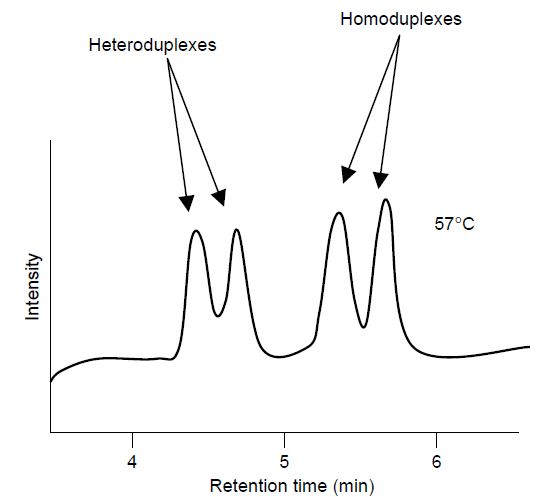

النبات

مواضيع عامة في علم النبات

الجذور - السيقان - الأوراق

النباتات الوعائية واللاوعائية

البذور (مغطاة البذور - عاريات البذور)

الطحالب

النباتات الطبية


الحيوان

مواضيع عامة في علم الحيوان

علم التشريح

التنوع الإحيائي

البايلوجيا الخلوية


الأحياء المجهرية

البكتيريا

الفطريات

الطفيليات

الفايروسات


علم الأمراض

الاورام

الامراض الوراثية

الامراض المناعية

الامراض المدارية

اضطرابات الدورة الدموية

مواضيع عامة في علم الامراض

الحشرات


التقانة الإحيائية

مواضيع عامة في التقانة الإحيائية


التقنية الحيوية المكروبية

التقنية الحيوية والميكروبات

الفعاليات الحيوية

وراثة الاحياء المجهرية

تصنيف الاحياء المجهرية

الاحياء المجهرية في الطبيعة

أيض الاجهاد

التقنية الحيوية والبيئة

التقنية الحيوية والطب

التقنية الحيوية والزراعة

التقنية الحيوية والصناعة

التقنية الحيوية والطاقة

البحار والطحالب الصغيرة

عزل البروتين

هندسة الجينات


التقنية الحياتية النانوية

مفاهيم التقنية الحيوية النانوية

التراكيب النانوية والمجاهر المستخدمة في رؤيتها

تصنيع وتخليق المواد النانوية

تطبيقات التقنية النانوية والحيوية النانوية

الرقائق والمتحسسات الحيوية

المصفوفات المجهرية وحاسوب الدنا

اللقاحات

البيئة والتلوث


علم الأجنة

اعضاء التكاثر وتشكل الاعراس

الاخصاب

التشطر

العصيبة وتشكل الجسيدات

تشكل اللواحق الجنينية

تكون المعيدة وظهور الطبقات الجنينية

مقدمة لعلم الاجنة


الأحياء الجزيئي

مواضيع عامة في الاحياء الجزيئي


علم وظائف الأعضاء


الغدد

مواضيع عامة في الغدد

الغدد الصم و هرموناتها

الجسم تحت السريري

الغدة النخامية

الغدة الكظرية

الغدة التناسلية

الغدة الدرقية والجار الدرقية

الغدة البنكرياسية

الغدة الصنوبرية

مواضيع عامة في علم وظائف الاعضاء

الخلية الحيوانية

الجهاز العصبي

أعضاء الحس

الجهاز العضلي

السوائل الجسمية

الجهاز الدوري والليمف

الجهاز التنفسي

الجهاز الهضمي

الجهاز البولي


المضادات الميكروبية

مواضيع عامة في المضادات الميكروبية

مضادات البكتيريا

مضادات الفطريات

مضادات الطفيليات

مضادات الفايروسات

علم الخلية

الوراثة

الأحياء العامة

المناعة

التحليلات المرضية

الكيمياء الحيوية

مواضيع متنوعة أخرى

الانزيمات
Denaturing High-performance Liquid Chromatography(DHPLC)
المؤلف:
John M Walker and Ralph Rapley
المصدر:
Molecular Biology and Biotechnology 5th Edition
الجزء والصفحة:
21-11-2020
2161
Denaturing High-performance Liquid Chromatography(DHPLC)
DHPLC has been shown to be a fast and reliable method for SNP detection and discovery. The technique is based on the analysis of homoduplexes and heteroduplexes formed between reference and mutant DNA molecules by iron-pair reversed-phase high-performance liquid chromatography under partially denaturing conditions. For DNA fragments of between about 100 and 1500 base pairs, DHPLC has been shown to be capable of detecting all single base substitutions and also
small insertions and deletions.
To perform the analysis, DNA fragments amplified by PCR from reference and test chromosomes are mixed together, fully denatured at 95 °C and allowed to re-anneal by reducing the temperature slowly to about 25 °C. This results in three classes of duplexes: homoduplexes of the reference DNA and mutant DNAs and, third, mismatched heteroduplexes formed between reference and mutant DNA. Mismatched
heteroduplexes and homoduplexes are then introduced to an ion pair of the reversed-phase HPLC flow path where they bind to the HPLC capillary. The temperature is then increased to a threshold level, usually between 50 and 60 °C, whereupon the DNA duplexes become partially denatured. Initially the duplexes are retained in the HPLC capillary through ionic binding interactions between the negatively charged phosphate backbone of the partially denatured DNA fragments and the beads in the cartridge, which are coated with the positively charged ionpair reagent TEAA. The column is then eluted with a TEAA–acetonitrile gradient under conditions such that the heteroduplexes with a mismatched base pair(s) elute before the more stable homoduplexes.
Note that for SNP detection purposes, the two homoduplexes are indistinguishable. The eluted fragments then pass through a UV detector and the absorbance is measured and the data are analysed by computer. Two sets of peaks are observed for each duplex (Figure 1). The method is rapid, taking on average 7 min to analyse a genotype, and amenable to multiplexing through the use of fluorescence primer detection analogous to high-throughput DNA sequencing strategies. From a practical perspective, the method requires the use of Pfu polymerase instead of Taq polymerase for generating PCR products. Pfu has proof-reading properties which minimise the introduction of confusing PCR induced mutations.

Figure 1 Schematic of dHPLC analysis of PCR products showing that the homoduplex and heteroduplex DNA species are differentially eluted when the column is held at the Tm of the PCR fragment, in this case 57 °C. N.B. to detect homozygous point mutations, the mutant PCR product is mixed with reference wild-type DNA.
 الاكثر قراءة في مواضيع عامة في الاحياء الجزيئي
الاكثر قراءة في مواضيع عامة في الاحياء الجزيئي
 اخر الاخبار
اخر الاخبار
اخبار العتبة العباسية المقدسة

الآخبار الصحية















 قسم الشؤون الفكرية يصدر كتاباً يوثق تاريخ السدانة في العتبة العباسية المقدسة
قسم الشؤون الفكرية يصدر كتاباً يوثق تاريخ السدانة في العتبة العباسية المقدسة "المهمة".. إصدار قصصي يوثّق القصص الفائزة في مسابقة فتوى الدفاع المقدسة للقصة القصيرة
"المهمة".. إصدار قصصي يوثّق القصص الفائزة في مسابقة فتوى الدفاع المقدسة للقصة القصيرة (نوافذ).. إصدار أدبي يوثق القصص الفائزة في مسابقة الإمام العسكري (عليه السلام)
(نوافذ).. إصدار أدبي يوثق القصص الفائزة في مسابقة الإمام العسكري (عليه السلام)


















